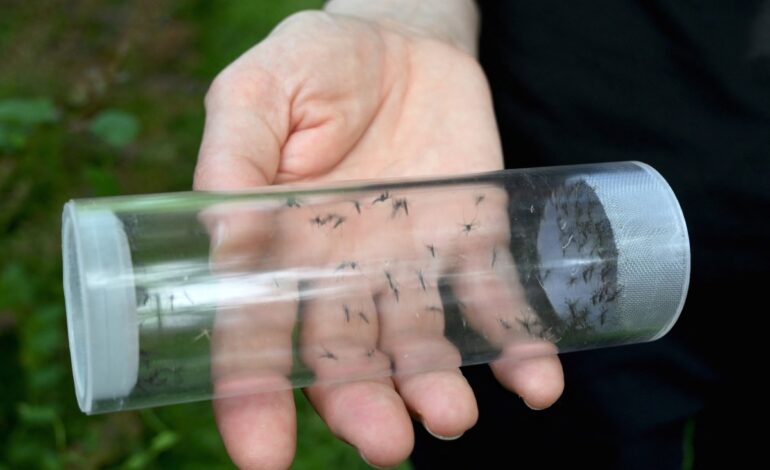Chikungunya’s Rare Appearance in New York Raises Alarm

A woman in Long Island has contracted the chikungunya virus, a mosquito-borne illness rarely seen in the United States. This case is particularly alarming as the woman had not traveled abroad, highlighting a concerning trend of insect-borne diseases expanding into new territories. Chikungunya, which causes fever and severe joint pain, is typically found in East Africa, Latin America, and Southeast Asia. Its emergence in New York underscores a growing risk that could affect public health across the nation.
The rise of diseases that were once confined to tropical climates is linked to several factors. Warming temperatures, urban expansion, and the adaptability of mosquitoes contribute to conditions favorable for outbreaks. In recent years, the United States has witnessed a notable increase in dengue virus cases, which caused over 6,500 locally acquired infections last year. The majority of these cases were reported in Puerto Rico, but instances also emerged in the U.S. Virgin Islands, Florida, California, and Texas.
Insect-borne diseases like chikungunya and dengue pose significant risks to health systems. They can severely impact quality of life and may be life-threatening, especially for young children and the elderly. The economic burden of these diseases is staggering, with estimates indicating that dengue costs Latin America and the Caribbean between $1.7 billion and $3 billion annually.
At the Pan American Health Organization (PAHO), based in Washington, D.C., efforts have been focused on preventing and controlling these infections across the Americas. There are several proactive measures the United States can implement to prepare for potential outbreaks.
Enhancing Surveillance and Training
Strengthening disease surveillance is critical for saving lives. Without effective monitoring, controlling outbreaks becomes nearly impossible. Robust systems are essential for tracking both the movement of diseases and their insect vectors. For example, a recent outbreak of chikungunya in Paraguay was identified early, revealing more severe symptoms and unexpected fatalities among children. Such early alerts are vital for adjusting responses before outbreaks escalate.
Training healthcare workers to recognize early warning signs of these diseases is equally important. Rapid clinical responses can save lives, as many cases go undetected until they reach severe stages. From primary care clinics to hospitals, health providers must be equipped to identify symptoms, confirm diagnoses through laboratory tests, and refer patients for timely treatment. Since 2011, PAHO has trained over 740,000 healthcare workers to manage insect-borne diseases, preventing more than 7,000 dengue-related deaths in the region.
Regional Cooperation is Key
Cooperation among countries is essential in combating the spread of mosquito-borne diseases, as these insects do not recognize borders. Effective responses require data sharing, coordinated surveillance, and joint outbreak management across the Americas. This collaborative approach has proven successful; despite a significant rise in dengue cases last year, fewer than 1 percent of those infected died, indicating improved preparedness and rapid action.
The appearance of chikungunya in New York should prompt vigilance rather than panic. By applying lessons learned from countries in Latin America and the Caribbean, the United States can bolster its defenses against mosquito-borne viruses. This includes utilizing current data, fostering international cooperation, and drawing from the expertise of communities that have long dealt with these challenges.
As public health officials and organizations work to mitigate the risks associated with chikungunya and other insect-borne diseases, the health, prosperity, and security of the American populace hinge on proactive measures and collaborative efforts.






